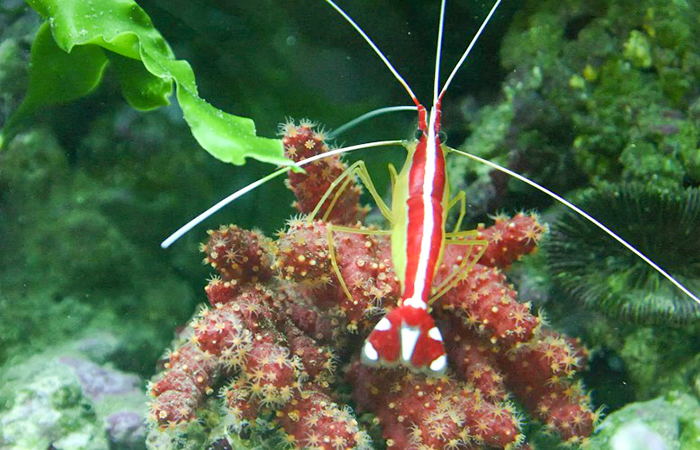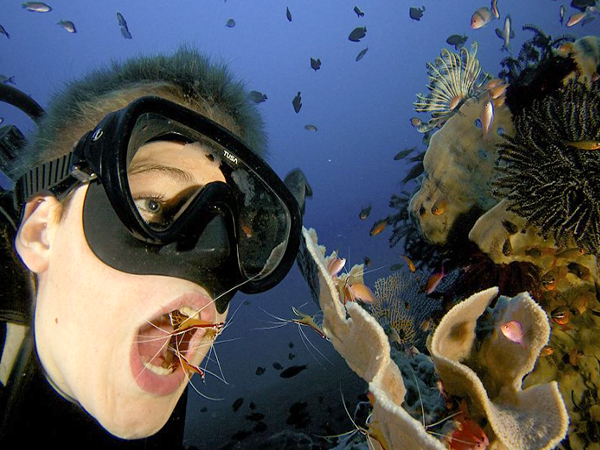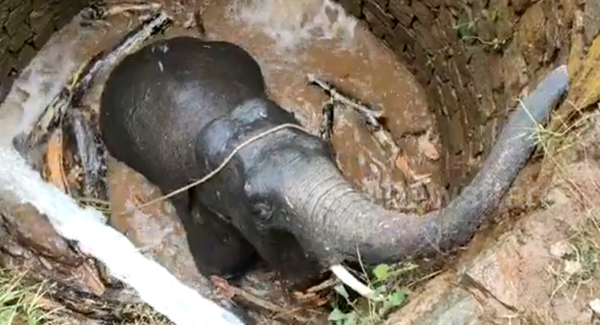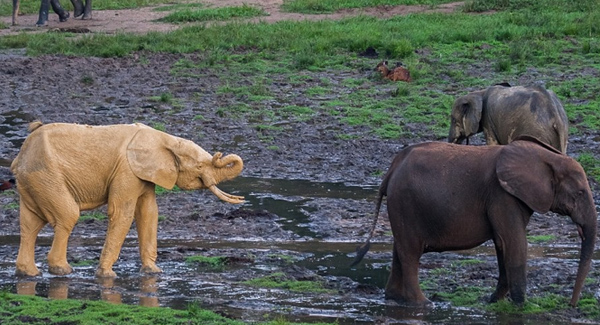One day, while diving along a reef on the coast of Hawaii, Patrick Seligman made an unlikely friend.
There, nestled safely in the nook of a rock was a colorful shrimp — a Pacific cleaner shrimp, to be specific. As Seligman approached, he caught her eye.

“They are pretty common on the reefs in Hawaii, but not all of them are willing to interact with humans,” Seligman told The Dodo. This particular shrimp, however, was. And then some.
Cleaner shrimp are so named for their eagerness to nibble parasites and ᴅᴇᴀᴅ skin off of other animals who come to their undersea “cleaning stations.” In fact, the day Seligman first arrived, the shrimp had just finished up with a client: a visiting eel.

Lucky for Seligman, the shrimp evidently had a free slot in her schedule for him after that. Removing his breathing apparatus, Seligman opened his mouth — and the little shrimp swam right in. Her target? His teeth.
The hungry shrimp is seen bobbing in and out of the diver’s mouth without ꜰᴇᴀʀ, while it selects any old food caught in the teeth.

The cleaner shrimp lives on rock or coral outcrops on the ocean floor and feeds off parasites on the bodies of other fish. They congregate in groups of up to 25 at ‘cleaning stations’ and bigger fish will stop by for a cleanse.
They perform a rocking dance to attract the attention of passing animals, who are also attracted by the shrimp’s vivid red colour. The rocking is said to increase in intensity depending on how hungry each individual shrimp is.

The relationship between the shrimp and the bigger animals is mutually beneficial, because one gets a deep clean and the other gets a meal.

Incredible as it was, this wouldn’t be a one-time thing. A 13-year-old boy named Russell Laman from Lexington, Massachusetts, imitated the behaviour of the surrounding fish swarm to entice the cleaner shrimp into his mouth whilst snorkelling with his father Tim Laman in Bali, Indonesia.
The behaviour of species like the White-banded Cleaner Shrimp is well known to hard-core biologists and divers but capturing the process on a human is very rare.


Tim said: “It really is pretty amazing that these little shrimp immediately recognize a human mouth as analogous to a fish mouth and go in looking for bits of food.
“It takes a relaxed diver to take out his regulator at 23 metres deep and present your mouth wide open to some shrimp.
“You have to hold your breath for I’d say at least 30 seconds to have a reasonable chance, and Russell calmly held his breath for over 40 seconds.
“It is pretty unusual for a kid of Russell’s age to be able to do it.”




